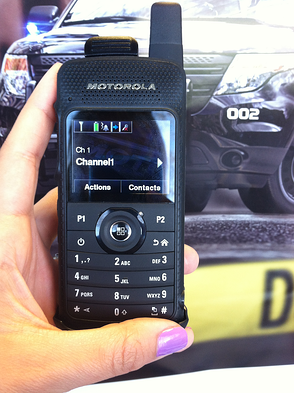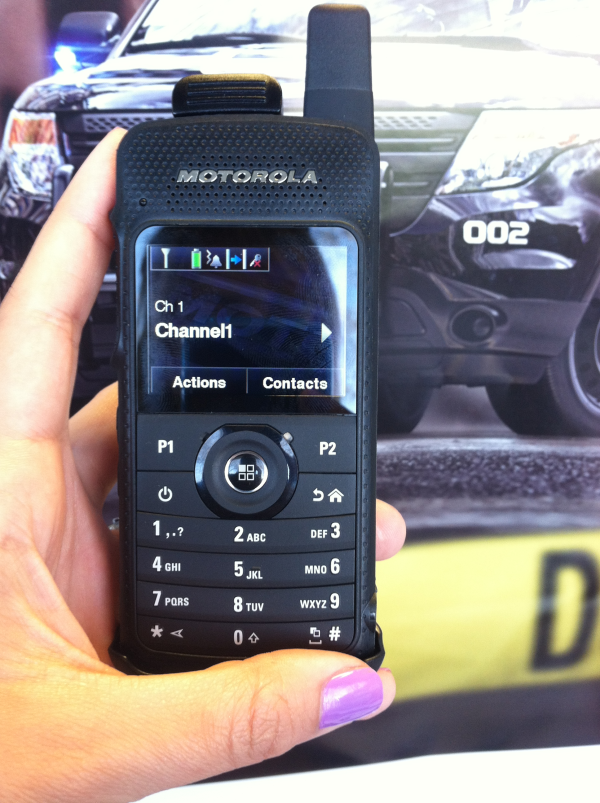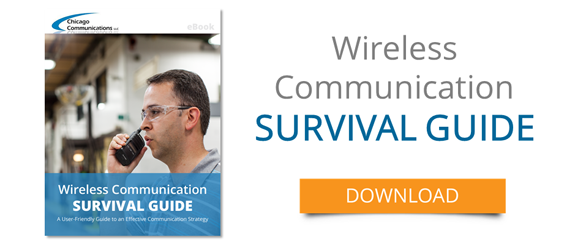Top 3 Trends of Radio in 2013
With 2013 finally upon us, it is time to move forward with regard to radio. Last year lead to one of the largest years radio dealers have seen in 20 years, mainly due to the Federal Communications Commission's mandate for Narrowbanding all radio channels below 512 MHz. Narrowbanding created scheduling conflicts and made things hectic for those involved, but overall, it allowed us to revisit with all of our customers. Some abided by the mandate, took the proper steps and have completed narrowbanding. Some have not. In addition to that, changes occurred with the D Block legislation that left the 470 MHz users on a freeze and rumors of a private LTE network for public safety left many questions unanswered as well. Looking ahead though, the future of two way radio remains to look bright, and here are 3 trends you’re sure to see this year.
to one of the largest years radio dealers have seen in 20 years, mainly due to the Federal Communications Commission's mandate for Narrowbanding all radio channels below 512 MHz. Narrowbanding created scheduling conflicts and made things hectic for those involved, but overall, it allowed us to revisit with all of our customers. Some abided by the mandate, took the proper steps and have completed narrowbanding. Some have not. In addition to that, changes occurred with the D Block legislation that left the 470 MHz users on a freeze and rumors of a private LTE network for public safety left many questions unanswered as well. Looking ahead though, the future of two way radio remains to look bright, and here are 3 trends you’re sure to see this year.
Narrowbanding: The Deadline that Keeps on Going?
By now talk of ‘Narrowbanding’ is probably sounding like a broken record, but for good reason. I frequently receive emails from Rich Nowakowski at RCN Consulting, who assists us in our licensing and grants. Rich’s latest e-mail indicated that “According to the FCC, 20,000 Public Safety licenses have not been narrowbanded. Some 80,000 to 90,000 Business Band licenses have not been modified as well”. He indicated that the FCC met to discuss this on the 15th of January. This most likely means the FCC will be taking the next steps to enforce noncompliance of the narrowbanding mandate. Number one on your list if you have not completed narrowbanding is to contact us and let us help you through this process. I cannot stress enough that you need to become compliant as quickly as you can. Licensing is taking well over 120 days and is probably the biggest factor that plays into this equation. You can’t plead ignorance when letters have been sent for years from the FCC, radio shops and licensing assistance companies all using databases that pull directly from the FCC. (To read my advice for those who have yet to become compliant, click here.)
Nextel Gets Its Death Date
In addition to the narrowband mandate, Nextel is pulling the plug on their radio system. Those users who have Nextel have used it and enjoyed it for years, the system operated in and around the 800 MHz band. It allowed for “Direct Connect” between devices and more importantly between companies. Thus a user for a general contractor could talk directly to a user from one of their designated concrete companies. Two separate companies, but immediate contact with a push of a button. Sprint has been decommissioning sites over the last year and pulling channels from these sites. By June 30, 2013, it is expected that Nextel users will be contacted to move to the Sprint Cellular system and their “Direct Connect” feature to replace the existing push to talk radios. As this may hold value for some users, others just rely on the Push-to-Talk feature. For those users, we recommend checking out the new Digital Mobile Radio systems from Motorola Solutions.
Apps Aren’t Just for SmartPhones
Many users of the existing Nextel Push-to-Talk work in factories and manufacturing. Those users today can benefit from the digital MOTOTRBO radio system (by Motorola Solutions). Using the same functions of push to talk, the owner of the systems becomes the business itself by operating their own private radio system. Push-to-talk, person-to-person calling and text messaging all can be completed from one single device with digital radios. There are no reoccurring airtime charges or un-needed cellular abilities that you give to your users. Digital Mobile Radio, such as MOTOTRBO, allows software applications to be developed to enhance the radio systems to allow for GPS tracking, Remote Control, Messaging, Dispatching and Lone Worker status just to name a few. The momentum is continuing for 2013 with the advancement of radio. More and more applications are being developed to enhance workplace productivity. So far there are over a hundred applications that can be used with radio to improve efficiencies in your business. These apps allow businesses to run better than ever before, experiencing increased agility, productivity and efficiency while cutting costs.
What do these trends mean to you?
Many companies have begun to leverage these technologies to drive innovation. Employers are realizing that a lease of a system or up front purchase of a radio system will allow for connectivity to the employee, and you retain the equipment for years to come. As this is not for everyone, a review of your needs per agency may reveal that an integrated radio system may solve some of the problems. If you look at that exponential growth you are going to see a shift in relationships. Radio voice capabilities may remain the same, but when you start converting voice and video to data, its information that can be shared anywhere. It is what you do with it that will lend itself to your success and the solutions we hope to solve. In the future you’ll be able to handle all of your converged needs in one place when Radio, Data, Voice and Video migrate to one universal platform. A future that’s not too far off, I’d say.
Now we’d like to hear what you think…
What impact do you think these trends will have this year? How is your business using them to innovate?
If you ever need help, please contact us!
 This article was written by Tom Treichler, Director of Sales & Service at Chicago Communications. Tom has over 30 years of experience in the industry with a background in engineering, system integration, and wireless broadband. If you have any questions for Tom, or another representative at ChiComm, please contact us.
This article was written by Tom Treichler, Director of Sales & Service at Chicago Communications. Tom has over 30 years of experience in the industry with a background in engineering, system integration, and wireless broadband. If you have any questions for Tom, or another representative at ChiComm, please contact us.



